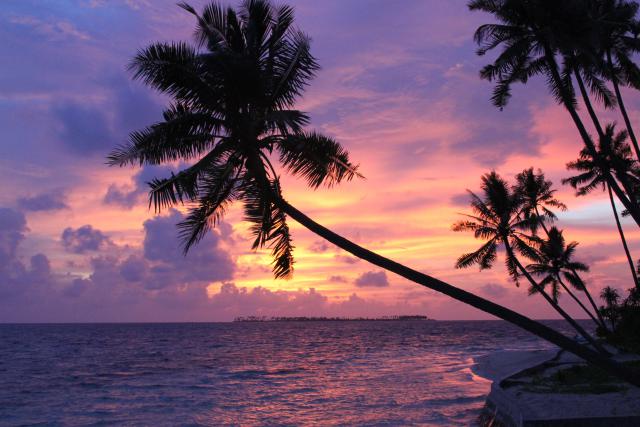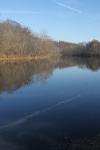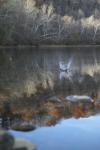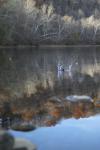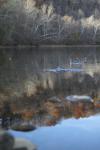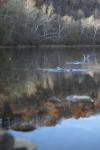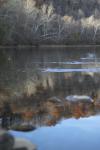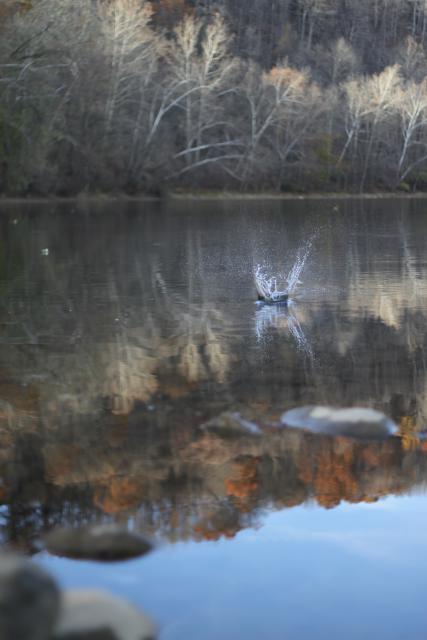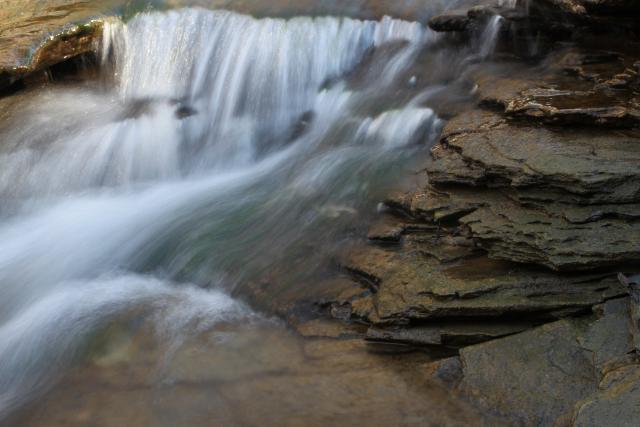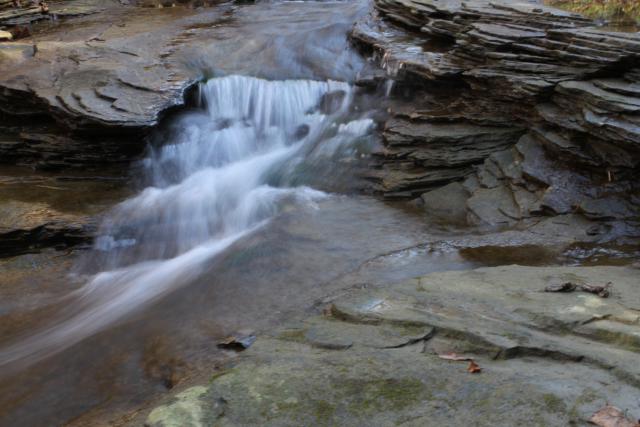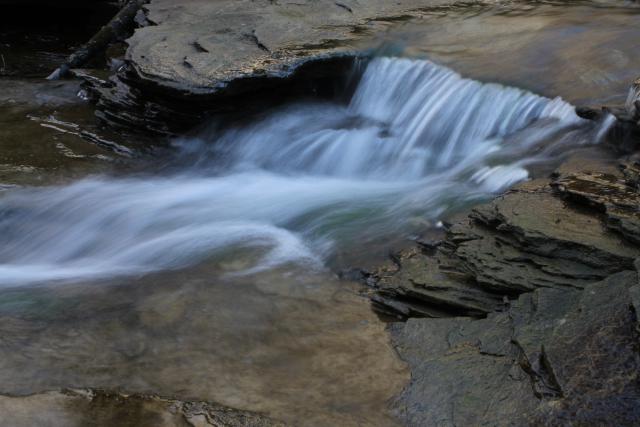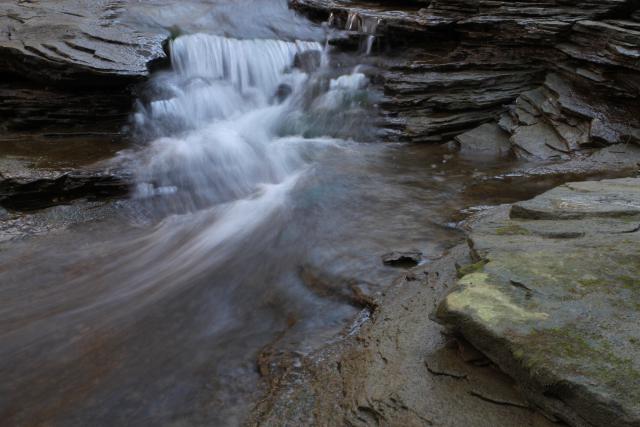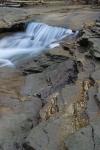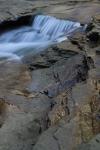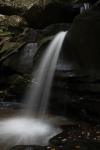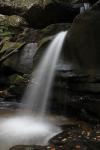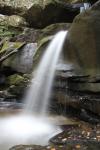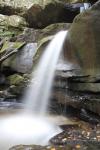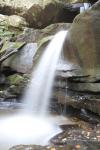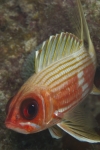water
Wakatobi: Sunsets
ktuli — Wed, 03/02/2011 - 21:41
I've been having some motivation issues with getting new posts written, so today I'm just dropping by to post a couple nice sunset photos. Enjoy.
Technical Data: Canon EOS 7D, Canon EF-S 18-55mm f/3.5-5.6 II at 18mm, 1/32 sec at f/8. ISO 320. No post production.
Technical Data: Canon EOS 7D, Canon EF-S 18-55mm f/3.5-5.6 II at 28mm, 1/32 sec at f/11.3. ISO 3200. No post production.
Hopefully I get my motivation back soon and can get back to posting regularly.
- Bill
Poll: Top Third or Bottom Third
ktuli — Sun, 11/21/2010 - 19:32
I usually don't do polls so close together, but I wanted to share these and gather opinions on whether folks liked more water or more sky.
I know I've mentioned it repeatedly in my critiques of shots, but I don't know if I've specified what exactly is mean when I refer to 'the thirds'. Imagine drawing a tic-tac-toe grid on your photo (or in your viewfinder when composing your shot). One thing to look at is whether any lines work well along one of those grid lines - an easy one is your horizon in landscape photography like this. Another way to look at those grid lines is where they intersect - placing one of your main focal elements at that point is generally considered. This is usually referred to as the Rule of Thirds even though it is more of a suggestion than a rule.
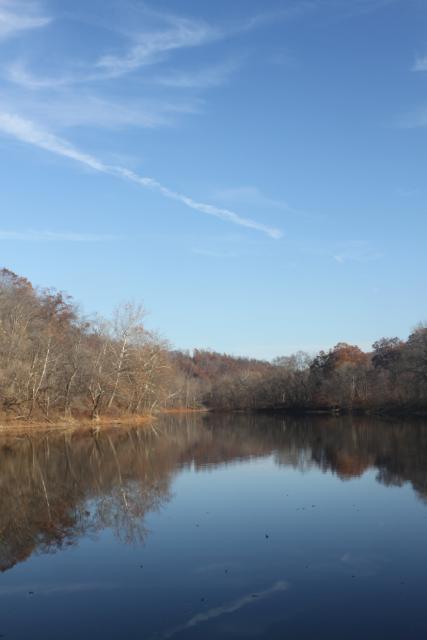 |
||
Both Photos Technical Data: Canon EOS 7D, Tokina AT-X M35 Pro DX AF 35mm f/2.8 Macro 1:1, 1/12 sec at f/22.6. ISO 200. Circular polarizing filter. No post production. Cedar Creek Park, Westmoreland County, PA.
I know these shots are not 100% identical left-to-right as I think I had to sidestep some low hanging tree branches to get the bottom third image, but I think it serves to show the difference between the placement of the horizon (or in this case the water level) on the top or bottom third.
You know the drill - place your vote, then leave me a comment to let me know what made you vote the way you did.
- Bill
Skipping Stones Sequence
ktuli — Fri, 11/19/2010 - 07:51
I don't feel much like typing much again today, so you get to benefit by getting to look at photos without a bunch of blabbering on and on.
Just mouse of the thumbnails to see the larger image.
Technical Data: Canon EOS 7D, Canon EF 50mm f/1.8 II, 1/1580 sec at f/1.8, ISO 200. Dolica AX620B100 tripod. Satechi TR-A Timer Remote Control Shutter Release. No post production. Cedar Creek Park, Westmoreland County, PA.
Enjoy.
- Bill
Cedar Creek Waterfall (part 2)
ktuli — Thu, 11/18/2010 - 21:52
I guess to call this a waterfall is a bit of a stretch, but I'm not sure what else to call it. Regardless, here are several more angles of it.
All Photos Technical Data: Canon EOS 7D, Tokina AT-X M35 Pro DX AF 35mm f/2.8 Macro 1:1, 1/3 sec at f/22.6. ISO 200. Dolica AX620B100 tripod. No post production. Cedar Creek Park, Westmoreland County, PA.
I know the middle one is pretty similar to yesterday's, but they are different angles. I like how each shot is different and has its own feel. Pick your favorite and drop me a comment with your critique.
- Bill
Cedar Creek Waterfall (part 1)
ktuli — Wed, 11/17/2010 - 19:11
Technical Data: Canon EOS 7D, Tokina AT-X M35 Pro DX AF 35mm f/2.8 Macro 1:1, 1/3 sec at f/22.6. ISO 200. Dolica AX620B100 tripod. No post production. Cedar Creek Park, Westmoreland County, PA.
Why This Photo: I was trying multiple angles of this small waterfall, this may be my favorite (maybe... I keep changing my mind).
What Works: The relatively long shutter speed worked to produce the soft, blurred stream of water, and the composition produces a very nice balance of the elements in the photo. The large flat rocks in the foreground provide a nice starting point for the viewer's eyes, leading into the striated layers of the rocks further back which curve the direction of the photo to the waterfall which rests nicely on one of the thirds. The water itself being the main focus of the shot produces a final line back out of the shot with the interesting curve of the water's path.
What Doesn't Work: Honestly, the image seems fairly monochrome (perhaps it would be better as a full black and white job). A splash of color might have brought some more "life" to this photo.
Like I said, I have several other angles of this small waterfall to share, so perhaps I'll get to them soon. For now, leave a comment and let me know what you think of this shot.
- Bill
Skipping Stones
ktuli — Mon, 11/15/2010 - 20:30
I know I've tried today's photo once before, but apparently I did not get very good results because I can't find any photos from the previous attempt, and to be honest, this most recent attempt yielded similarly poor results. So before we even get started, you can know that this is something I'll try again someday.
I am talking about capturing a photo of a flat sheet of water, with a nice reflection, and one or more splash of a skipping stone. I honestly can't remember why the last set did not work out, but when I tried the other day, I figured I would give the 7D's 8 fps shooting speed a run for its money. One nice thing came of this, I was able to confirm that my camera actually can do the 8 frames per second that it claims.
While the last set's problem was probably because I didn't really know what I was doing, this set's problem was more than I wasn't thinking enough and taking my time to fix all of my problems before I left. The biggest problem I faced this time was focus. I had manually picked a point to focus on, not trusting that the camera's AF system could keep up (though I didn't even try it to find out). So unless the splash was in the right place, it is out of focus. The other main problem I had was that I didn't compose my shot very well first. As you can see, the background is not the greatest (I should probably try this when things are bright and green or in full autumn colors). But I did get a couple keepers (and a handful more that might not be that great, but I kept any way).
Technical Data: Canon EOS 7D, Canon EF 50mm f/1.8 II, 1/1580 sec at f/1.8, ISO 200. Dolica AX620B100 tripod. Satechi TR-A Timer Remote Control Shutter Release operated by lovely assistant Christina. No post production. Cedar Creek Park, Westmoreland County, PA.
Why This Photo: As I said above, but in case you weren't listening, I just really like the idea of capturing a shot of a nice reflection and the splash of a skipping stone.
What Works: The splash on this shot is nice - crisp focus, perfectly frozen motion, and an intriguing shape. If you look close enough, you can even see the stone flying away from the splash.
What Doesn't Work: Just about everything else. The depth of field is a bit too shallow - perhaps I really didn't need the aperture of f/1.8. Possibly a tighter crop would make for a nicer shot. The background is rather bland with the bare November trees not providing a dark enough surface to make the splash really stand out. And while it is really hard to put the skipped rock in an specific location, this splash being dead center of the frame is unfortunately drab.
All in all, not the greatest shot. But I learned some things from this attempt, which should make the third attempt even more successful (hopefully). Things I will probably try next time:
- Smaller aperture (maybe f/2.8 or even f/3.5) for more depth of field
- Higher ISO to compensate for the smaller aperture (but not too high, don't want noise)
- Longer focal length (for a closer shot of the splash, though this will certainly reduce the success rate)
- Try Auto-Focus (it may or may not work, but at least check)
- A better background/composition (maybe during summer or early fall)
Even though I only came away with a couple keepers, as long as I learned something to hopefully make the next attempt better, this was worth the effort. Plus I do like the therapeutic nature of skipping stones.
- Bill
PS: Thanks are in order to Christina (who I met in my Photography 101 class) for manning the shutter release while I tried to skip the stones in the right spot to capture images like the one above. So one might say that technically she captured this shot.
Poll: Redo or Undo
ktuli — Sat, 11/13/2010 - 22:01
So today's trip to Cedar Creek Park was pretty successful. I'll have several good photos to share from the trip, but today I want to talk a little about deleting photos from the camera.
I usually am fairly good about being careful when deleting photos through the camera, but every once in a while I have a bunch I'm deleting and I zone out and delete one too many, or (as in the case with my SeaLife DC1200) sometimes confusing menus cause an unwanted delete of more than I expected. It has happened before, and I'm sure it will happen again, and you might not think it, but it'll probably happen to you someday too.
Today, I accidentally deleted a photo I wanted and decided I would simply try to replicate it. But also when I got home, I used Pandora Recovery to undelete the file from my compact flash card. I've used Pandora Recovery a couple times before, and really like it as a piece of software.
First, it is free. If want to download and use it for free, you definitely can. I personally am not a fan of doing that for software I like and have sent a small donation to the team to show my appreciation. So while it technically is free, I'd recommend tossing a few bucks their way to support such a good product. The software is small and light, and doesn't try to install any other software you don't want. It isn't adware or nagware. It is just exactly what it says it is. A powerful and easy-to-use tool to recover deleted files.
Pandora Recovery is definitely something that should be in every photographer's toolbox for those cases when you really need to get that one shot back. Do yourself a favor and download it today and then send the team a quick PayPal donation - you won't regret it.
So let's look at the photos...
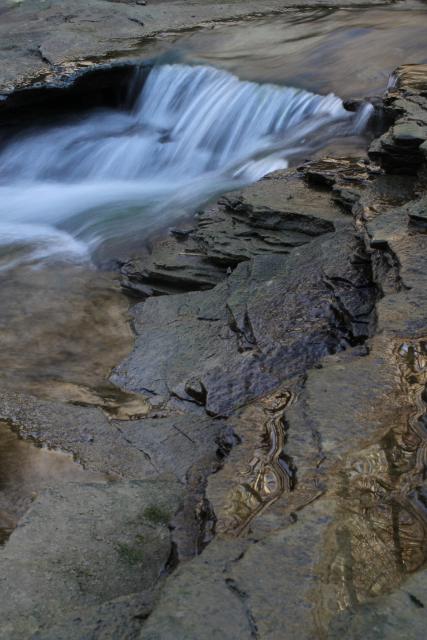 |
||
If you mouse over the thumbnail on the left, the larger image will display that photo. So you can easily compare the two back and forth.
Interestingly enough, despite twenty minutes passing between the two shots, I managed almost identical shots. The technical data was 100% identical, the only thing that differs is the lighting and the framing of the shot from setting the tripod down and angling the ballhead differently.
Technical Data: Canon EOS 7D, Tokina AT-X M35 Pro DX AF 35mm f/2.8 Macro 1:1, 1/3 sec at f/22.6. ISO 200. Dolica AX620B100 tripod. No post production. Cedar Creek Park, Westmoreland County, PA.
I'm going go back to my typical stance here and not share my preferred photo just yet. Place your vote and leave me a comment to let me know which photo you chose and why. Give a full critique if you like.
Oh, and don't forget to check out Pandora Recovery before you need it in a hurry.
- Bill
Rough Morning on the Water
ktuli — Sun, 10/03/2010 - 22:08
I could use a morning spent like this... choppy water or not. What do you think?
This photo was taken around this time two years ago on an early morning fishing trip on the Outer Banks in North Carolina. This used to be a favorite and regular vacation spot for us, but we haven't been there recently.
Technical Data: Canon EOS Digital Rebel XT, Canon EF 80-200mm f/4.5-5.6 II at 80mm, 1/800 sec at f/5. ISO 400. No post production. Cape Hattaras, NC.
Why This Photo: We were out on the boat before sunrise, so as the sun came up over the horizon, I clicked of a round of photos. On the rocking boat deck, most were throw-aways, but I did bring home a couple keepers. We brought home some fish for dinner too.
What Works: The composition uses the rule of thirds with the horizon on the upper third, and the boat deck chair reaching to the bottom third. Additionally, the sun and the prominent wave hit on the right third. The warm sunrise color is a beautiful contrast to the cool blue water. The crisp focus hits right on the whitecap of the wave, and probably most surprising to me is the horizon is actually level!
What Doesn't Work: I unfortunately was at the widest focal length of this zoom lens, and I couldn't really back up, but it would have been nice to have gotten more of the boat in the shot to make it more obvious that the shot was taken from the boat - perhaps a lower angle would have worked. Also, a deeper depth of field might have been nicer - with the full sunlight into the shot and the fast shutter speed (1/800th sec), I could have used to crank up the f/stop (except I didn't even know what an f/stop was back then).
So I could use another morning like this... both to get another chance to make another photo better, and just because it would mean I was on vacation. And I could certainly use both of those things.
- Bill
Time Spent at the Falls
ktuli — Fri, 10/01/2010 - 18:58
Ok - hopefully I can keep my promise from my last post and provide something a bit more appealing today.
Not too long ago, I took a trip up to McConnell's Mill State Park. I really love going to this park, but honestly, I get mixed results with my photography there - I never know whether I'll come back with stuff I like, or a whole card worth of images to delete.
This trip, as I was driving there, I thought about what kind of photography I would like to do that day. Sometimes this works out and I manage to get exactly what I wanted, but more often than not I miss the mark altogether. Most days, I try to head out with no plan whatsoever and just capture whatever I can find. Both ways work, and I flip back and forth between them.
As I cruised up I79, listening to Lotus, I thought perhaps I should delve into HDR. And with that in mind, I decided to take multiple exposures of any shots I did.
Here's one set of results... (if you hover your mouse over one of the thumbnails, it will change the larger image, then you can slide along the row of thumbnails to see the progression in exposure - if it is the first time through, be patient as sometimes my server is a little slow and the image might take a moment to load).
Technical Data: Canon EOS 7D, Sigma 10-20mm f/4-5.6 EX DC HSM AF at 16mm, 1.3, 2, 3.2, 5.2, 8, 12, 21 sec respectively at f/28.1. ISO 200. Dolica AX620B100 tripod. No post production. McConnell's Mill State Park, Lawrence County, PA.
So for the most part, a lot of those images don't really work by themselves, but the hope is that I can eventually run these through some HDR processing and get a super image out of them.
If you're unfamiliar, HDR works by taking a set of differently exposed images and merging them into a single image with a much greater detail by including a high dynamic range of sensitivity from the darkest to lightest details. Our eyes naturally can see a much wider range in sensitivity to light than our cameras can, so using a post production process like this is the way around that limitation.
I'll be honest, I've never done any HDR work before, so hopefully this works and then I'll eventually share the final product here.
Thanks for stopping by, leave a comment and let me know what you think of these photos or any experience you have with HDR.
- Bill
Freezing Water Drops
ktuli — Tue, 09/21/2010 - 20:33
Ok, so I had a discussion recently about just how fast of a shutter speed you need to set to freeze moving water. So I decided to dig out these photos. Anya took these at Phipps Conservatory.
Technical Data: Canon EOS Digital Rebel XT, Tamron 180mm f/3.5 Di SP LD 1:1 Macro, 1/400 sec at f/5. ISO 400. No post production. Phipps Conservatory.
What Works: The droplets of water are nicely frozen, and excellently placed on one of the thirds. The light reflecting in the drops provides nice highlights that draw the viewers eyes quickly to them as the main focal element of the photo. And finally, the nicely softened background from the fairly wide aperture offers a hint at the stature behind the fountain without it being a distraction.
What Doesn't Work: The floating fountain is somewhat disturbing, providing just a small portion of the fountain base along the left edge of the frame would anchor the photo more. Also, the convergence of the fountain and the statue's head could have probably been fixed at the same time by repositioning slightly. There also is a very slight amount of camera shake from the shot being done handheld (because Phipps has a policy against tripod use)
And just because I feel like it, we'll look at two photos today, so here's the second...
Technical Data: Canon EOS Digital Rebel XT, Tamron 180mm f/3.5 Di SP LD 1:1 Macro, 1/500 sec at f/5.6. ISO 400. No post production. Phipps Conservatory.
What Works: This shot does an opposite view from the one above, here the water drops become the background element, and let the orchids take the foreground focal element. The diagonal lines of the fountain base provide a nice offset in the image (diagonal lines are usually pleasing for whatever reason).
What Doesn't Work: The main thing that I don't like about this photo is the small bit of the flower pot encroaching on the left edge of the frame. With it being bright white, it is not able to be ignored.
Anyway - back to what started today's discussion, the shutter speed necessary to freeze water drops. Granted these water drops aren't exactly moving at the speed of bullets, but the exposures settings used are not pushing the boundaries of what the camera could do by any stretch of the imagination.
Should Anya have needed to freeze the motion more, she could have used a wider aperture, which would have allowed for an even faster shutter speed. Additionally, at ISO 400, she could have possibly increased that slightly to also allow for even faster faster shutter speed. And on top of all that, she could have also used flash to help provide additional light to freeze the motion.
The bottom line is that freezing motion like this is much easier than you might think. Give it a shot sometime and see what you can get.
- Bill


